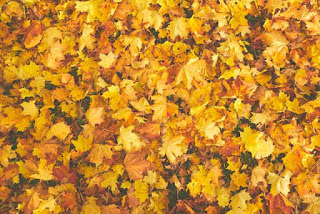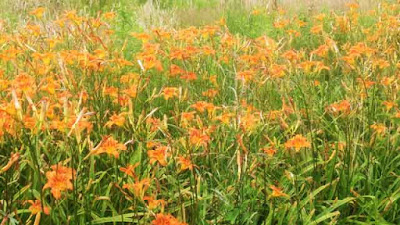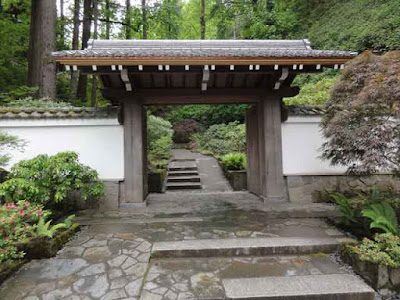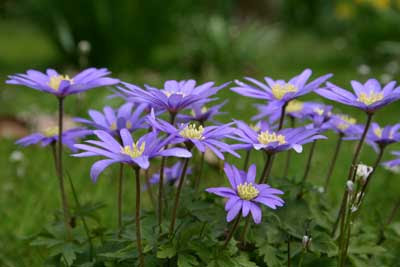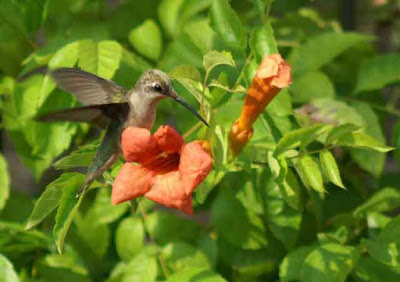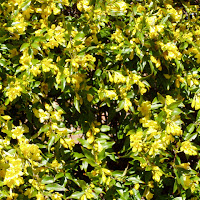A representative of
Tuck.com recently contacted me to inform about their work in sleep studies, specifically how some plants act as sleep aids. While much of the information about specific plants and their effects are well-known, I think it’s worth reviewing.
House Plants That Might Help You Sleep.
Their contributor, Abbie Stutzer, published an article, Houseplants and Sleep. In it, she names 10 plants that might help you sleep. They are:
1. English Ivy
English Ivy (
Hedera helix) is best known as a climbing ornamental vine and ground cover. It can also be grown as a houseplant.
Hedera helix ‘Ivalace’ is a good one for indoors, as is ‘Needlepoint’. ‘Baltica’ has larger leaves, but the decorative white veins in the foliage make it another fine choice. Hedera helix thrives in low light conditions and indoor environments. The reason this species is noted is due to its ability to help “clean indoor air.” This characteristic is shared by most other plants, but not all do so well indoors.
2. Chinese (or Philippine) evergreens
Stutzer noted, “A study in the Journal of Physiological Anthropology discovered that Chinese or Philippine Evergreens, also known as
Aglaonema brevispathum, are great at removing indoor pollutants. In the study, the researchers observed that
Aglaonema brevispathum, and two other plants (
Pachira aquatica, also known as a Guiana chestnut, and
Ficus benjamina, also known as a weeping fig) effectively removed air pollutants when they were placed by a window.”
Aglaonema is a good choice for folks who don’t have time to mess with keeping plants alive. The most negligent, however, might find a way to kill them. You’ll often find them in shopping mall planters, if that’s any indication of their ability to survive. The foliage is quite attractive.
Pachira aquatica is a good choice for people who have a tendency to care too much and over-water their plants. Its other common name is Money plant, perhaps because it is such a profitable item for commercial plant growers.
Weeping fig (
Ficus benjamina) is so very popular it probably needs no introduction.
3. Snake plant
Stutzer wrote, “Snake plants, also known as
Sansevieria trifasciata, can thrive inside and outside of the home. An article that was done by Japanese researchers for the Food and Agriculture Organization of the United Nations found that the snake plant is able to absorb multiple hazardous chemicals, leaving indoor spaces cleaner. The plant also requires little care to survive.” Her last sentence can not be overstated. These things grow wild as weeds in the Caribbean Islands. Heat, drought and abuse hardly phase them.
4. Peace lily
Peace lilies, (
Spathiphyllum spp.), are superb indoors. They survive with very little light, but the soil should be kept barely moist to the touch. Stutzer cites a study completed for the Plants and Environmental Quality Group finding that peace lilies could remove airborne toxins. She also notes that Peace lilies “have been shown to help people recovering from abdominal surgery recover”, but there’s no indication how.
5. Chrysanthemum
“Chrysanthemum is another plant lauded by NASA scientists for its air cleaning abilities. Its air purifying capabilities also were observed by a group of researchers who wrote an article for the journal Ornamentals and Flowers,” she wrote. She also observed, “The plant is perfect for a bedroom setting because it can live in lower light conditions.”
I’m not so sure I agree with that since they are usually grown outdoors in higher light conditions. I suppose they could be kept indoors for awhile. Potted mums in bloom make fine table decorations, and the foliage is aromatic. Though she specifically mentions
Chrysanthemum,
Dendranthema has the same qualities.
Dendranthema was reclassified; it was formerly a
Chrysanthemum.
A popular sleep aid contains the following three ingredients.
As I write, I’m holding a bottle of a popular sleep aid that contains three ingredients believed by many (including me) to be safe and effective. It does not contain alcohol, and is “Drug Free.” It contains valerian, lavender and chamomile.
6. Valerian
Stutzer wrote, “Valerian is a perennial herb, or shrub. Its dried rhizome and roots are sometimes used in supplements. The evidence that supports Valerian as a sleep aid is inconclusive. A 2007 study in the journal Sleep Medicine Reviews found that valerian may not significantly help people with insomnia sleep. However, a study in the journal Chemical Senses discovered that the inhalation of valerian (when the plant is used as an odorant) could help people with insomnia sleep. People who inhaled that plant’s scent slept longer and better.” That could well be so. Valerian has a similar action upon the body as Valium, the synthetic drug.
7. Lavender
Lavender is well-known for its pleasant scent. “According to a 2013 study in the journal Evidence-Based Complementary and Alternative Medicine, a handful of single-blind randomized studies” concluded that lavender “improved the mean scores of sleep quality” in some students, heart disease patients and persons with insomnia.
8. Chamomile
Chamomile is a well-known daisy-like flower that is favored for its sleep-inducing properties. The flowers contain terpenoids and flavonoids. Chamomile tea is one of the most popular ways to take it, but essential oil of chamomile is sometimes used as aromatherapy.
Frankly, I don’t know how valerian, lavender and chamomile would serve as houseplants. They would certainly be welcome additions to some outdoor gardens.
9. California poppy
The California poppy flower is used to treat nervousness and anxiety. This is another that I doubt could be grown successfully as a houseplant. Stutzer notes: “A 2014 study in the journal European Medicines Agency found that California poppy could improve sleep quality and duration.” I don’t doubt it. California poppy (
Eschscholzia californica) is a member of the
Papaveraceae family. It contains the alkaloids chelirubine, sanguinarine and macarpine – all sleep-inducing agents. Incidentally, sanguinarine is known to inhibit cell growth in squamous cell carcinoma, but that’s another subject best left for later. (See article in
ScienceDirect.com).
10. Aloe vera
Aloe vera is a popular that is known to have many medicinal properties. One such property has contributed to its name, “burn plant.” Application of the gel-like juice to a flesh burn helps reduce inflammation, and promotes healing. It is also known to have some sedative effect even when applied as a skin moisturizer. I’m not sure how one might use the
Aloe vera plant grown in the bathroom window, but perhaps topical application of the gel might help.
One other plant not mentioned by Ms. Stutzer that’s known to aid sleep is:
11. Hop
Humulus lupulus, the common hop used in beer-making. Well, no wonder beer makes one sleepy! Hop vines actually are lovely ornamentals when grown on trellises. Dried hops, lavender, chamomile, and valerian have been used for centuries as ingredients in “dream pillows” - little sachets used to induce peaceful, restful, (sigh)…. Sleep.
I must stress that nothing included in this or Ms. Stutzer’s article should be construed as medical advice. Always, always, always consult your doctor before using any purported remedy.
Return to
GoGardenNow.com


